The Million Dollar Case Study was built on the premise of transparency–everything is going to be shared, regardless of warts and blemishes. It’s no surprise that things get especially interesting when looking into the dollars and cents. There is, understandably, a fascination around the finances of the case study, and for good reason: every dime of profit is going towards building schools around the world with Pencils of Promise.
In this session, Shane Stinemetz of Fetcher takes us behind the scenes into the finances of Jungle Snugs and Jungle Stix (the bamboo marshmallow sticks of the Collaborative Launch). Shane shares some important tips on monitoring and analyzing the financial health of an Amazon business. Amazon’s Seller Central dashboard makes this process cumbersome and tedious, but understanding the most important business metrics are imperative if you’re going to save money and grow a successful, lasting Amazon business.
A quick note: if you don’t read to the end of the post, just click through to the bottom to get a special 50% off exclusive discount to Fetcher that Shane offered. This is in addition to a free 31 day free trial, with no credit card required. A great way to get a quick and free glimpse into the profits of your Amazon business!
Here is the full replay of the webinar:
If you are currently selling on Amazon, do you have an understanding of your current business metrics? Here are some questions that may help you understand the grasp that you have on your business:
- What are your exact profits for each quarter?
- How much money did you invest in the business?
- What is Return on Investment for the business as a whole, and for each product?
- Your gross margin?
- What about service fees—storage fees, pay per click costs
- Do you have any unnecessary fees?
- Are there costs that you can cut down on?
These are just some of the questions that you want to be able to handle in order to build a strong fundamental business that can last years into the future.
As Shane lays out in the webinar, there are essentially two approaches to managing your finances as follows:
Method #1: Seller Central and Excel
This is the de facto method for many sellers starting out. It entails various exports from Seller Central (Shane counts 11 unique reports), then including personal costs like shipping, cost of goods sold, general administrative costs, and various other expenses. As Shane is a glutton for punishment, he went through the process himself, and spent upwards of 7 hours (and some money) to build his own Excel spreadsheet with macros and definitive data. This is a method reserved for the extreme shoe string budget.
Method #2: Software As A Service
Method #2 relies on software to handle the accounting, calculations, and finances. This is what Fetcher does – it streamlines and calculates these important business metrics instantaneously. As Amazon becomes increasingly more competitive, facilitating the monotony of financial calculations becomes increasingly important. Most of all, it frees up time so that you as a seller can focus on growing the business as opposed to filling in spreadsheets.
The 3 Most Important Financial Metrics
At a high level, the most important numbers to always stay on top of are sales, expenses, and profits.
Shane started by looking in Fetcher (this can also be done in Seller Central of course) to see the high level sales.
One important note: Seller Central does not account for promotional giveaways and discounts, so will often show a higher and inflated top line revenue than reality. Fetcher separates these promotional giveaways from the top line revenue.
Sales
Here is a look at the sales for Jungle Stix and Jungle Snugs for the last 30 days:
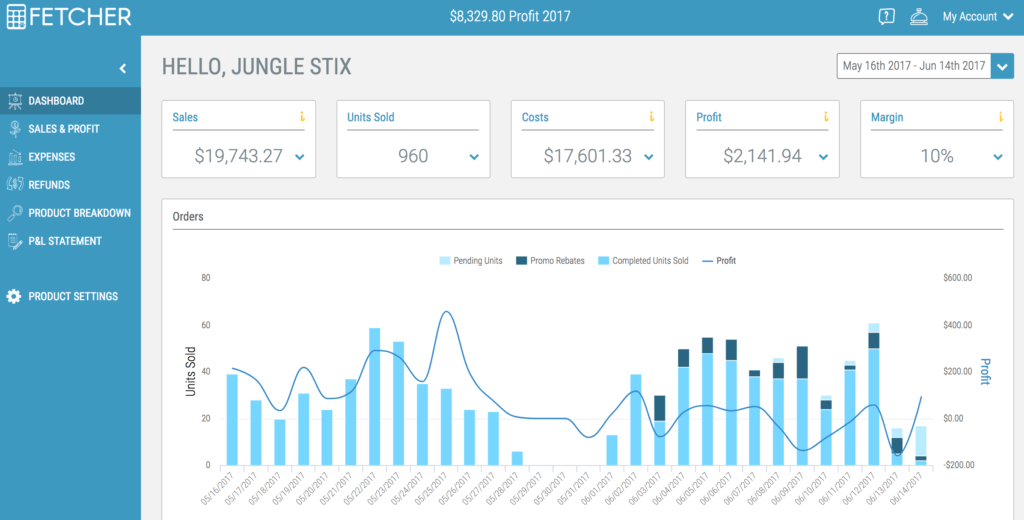
Nearly $20k in the last 30 days, at 10% profit margin. Not too shabby at all! However, there is a bit more information that we can pull out from here, if we click into the boxes at the top, so you can see greater details on the sales, units sold, costs, etc:

It is important to note here that there is a significant expense devoted to the product launch strategy for Jungle Snugs (you can see the units that were “sold” were Promo Rebates, or discounted promotions, in the bar graph above).
Shane offered some important advice when looking and analyzing data: what is the narrative that the data is sharing?
Jungle Stix used to be at a 20-25% profit margin. And in the dashboard above we are seeing a 10% profit margin. What gives?!
Well, now we are selling more than one product, we need to identify which products are contributing, and which are not. To do so, let’s take a look at each product individually:
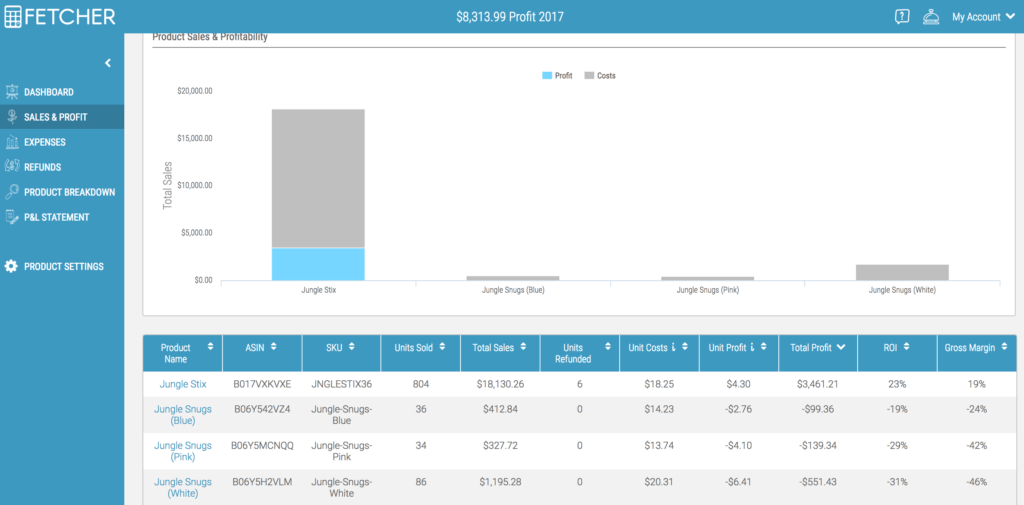
Ah, nice, so Jungle Stix look to be at a 19% gross margin! However, the Jungle Snugs all look to have a negative gross margin. As mentioned above, we have been running promotional giveaways, and knowing that these promotions have a discounted sales price, we can expect an impact on our profit margins.
If we dig into the Product Breakdown for each particular product, we can see a visualization of the product launch strategy. If you missed this, you can catch the recap of our Product Launch Strategy is outlined in Session #12. Greg aims to boost the product’s sales velocity, improve the Best Seller Rank, and ultimately get the product listing on our main keywords like “hooded baby towel”, “baby towels”, etc.
In the chart below, the Promo Rebates (Dark Blue) are the majority of sales for the first 4 days (6/3-6/6) when products were given away at a discount on Jump Send. However, after that, on 6/7, you can see that the dark blue portion reduces in proportion to the light blue, which represents the organic sales. Shazam, the product launch strategy seems to be working!
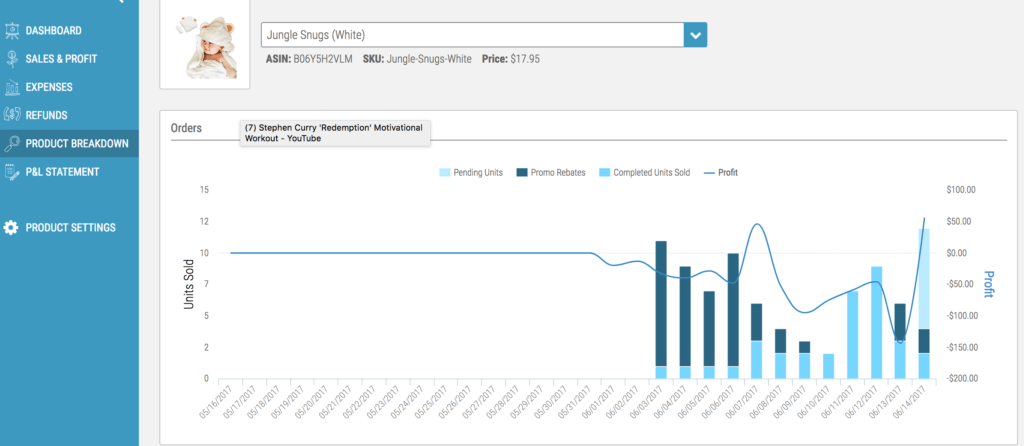
Here is a similar perspective for the pink version of Jungle Snugs, which have been available for less time than the white version:
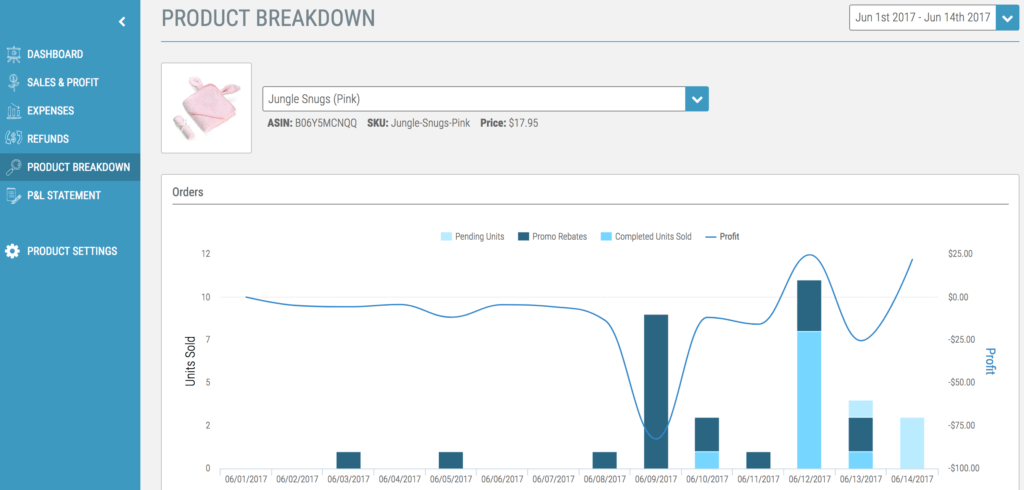
And likewise, a similar story with the blue version:
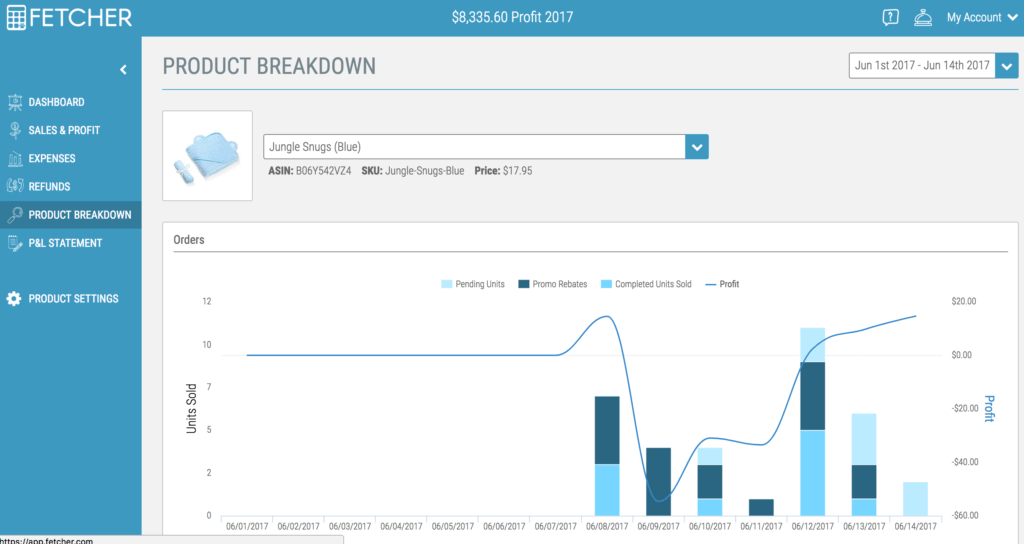
Expenses
Expenses, those pesky yet necessary costs that are needed in order to run a business on Amazon. Well, any business, for that matter. Let’s take a look at the costs, as a pie chart, for the last 30 days:
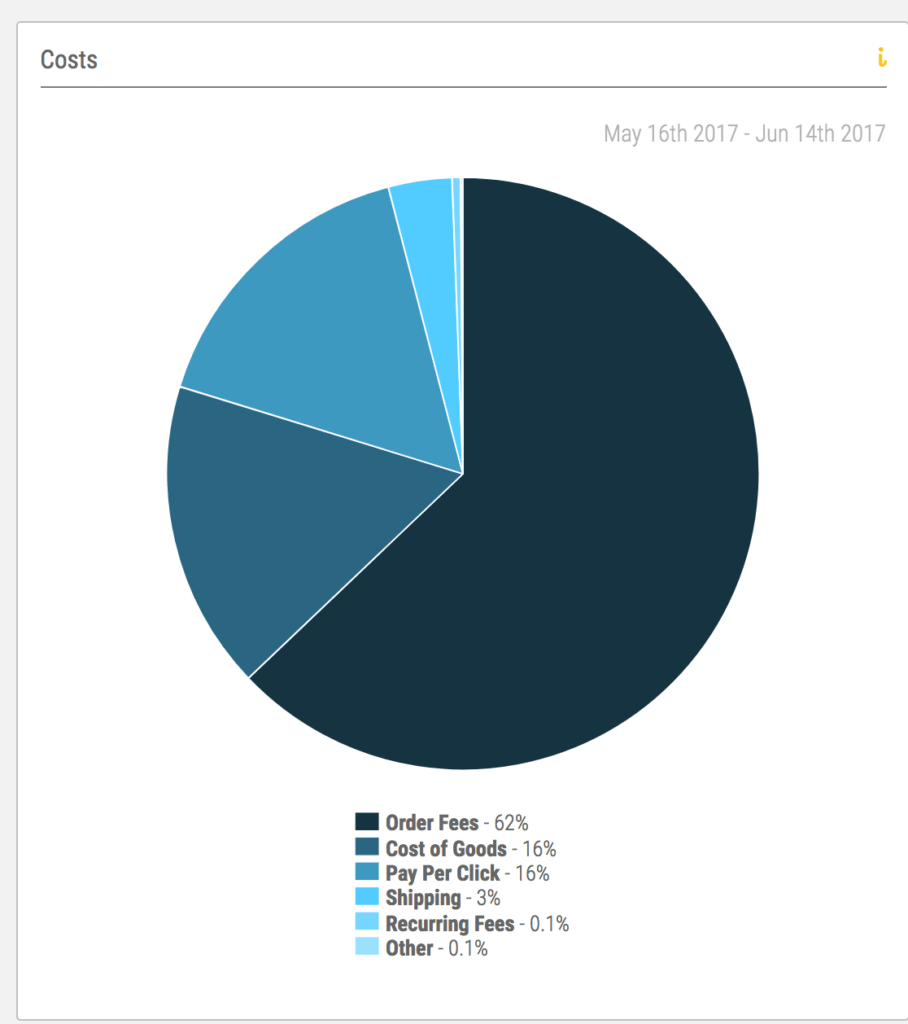
Clearly, the Order Fees, otherwise known as the Amazon FBA fees, are the most major cost of business. This is not something that can really be reduced, and is the cost of doing business on Amazon. These fees cover the storage, pick, pack, shipping, customer service, and access to sell to Amazon’s existing customer base. It can appear to be hefty, but simply the cost of doing business on the largest, and growing, marketplace in the world.
One of the very cool features of Fetcher is that you can drill down into expenses to get greater insight. For example, it looks like our Pay Per Click campaigns are one of our other significant expenses alongside cost of goods. If we dive into this pie chart, we can see which of our particular campaigns and keywords are costing us:
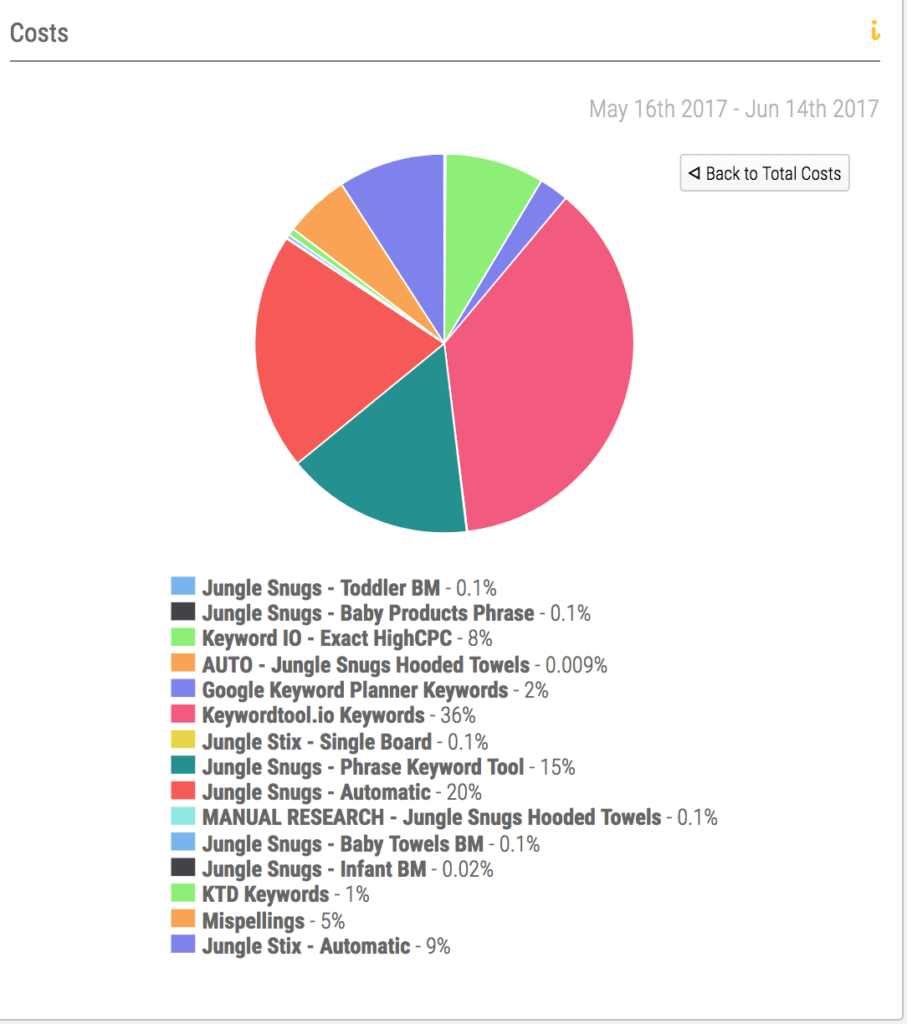
There are various layers of what ultimately becomes an expense. It is very important to account for each and every line item, as each expense will eventually effect the bottom line of profit.
The first important cost to consider is the Cost of Goods Sold (COGS)–what did it cost you to get the product manufactured?
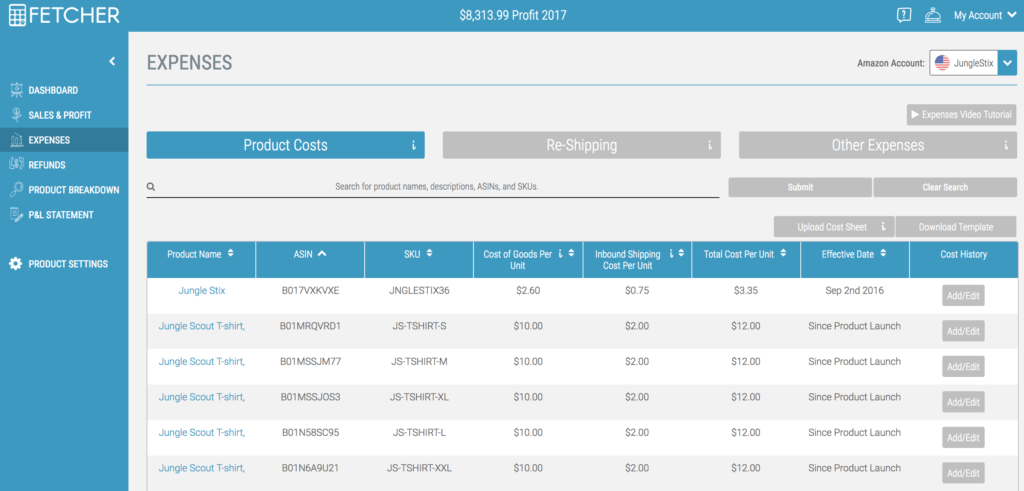
There are shipping costs (importing from China, as well as domestic shipping to the Amazon warehouse), which you want to consider. Additionally, there are other expenses which are necessary and important to monitor, like product photography, software costs, possibly staff, overhead, storage, and more. Here is a look at the other expenses included:
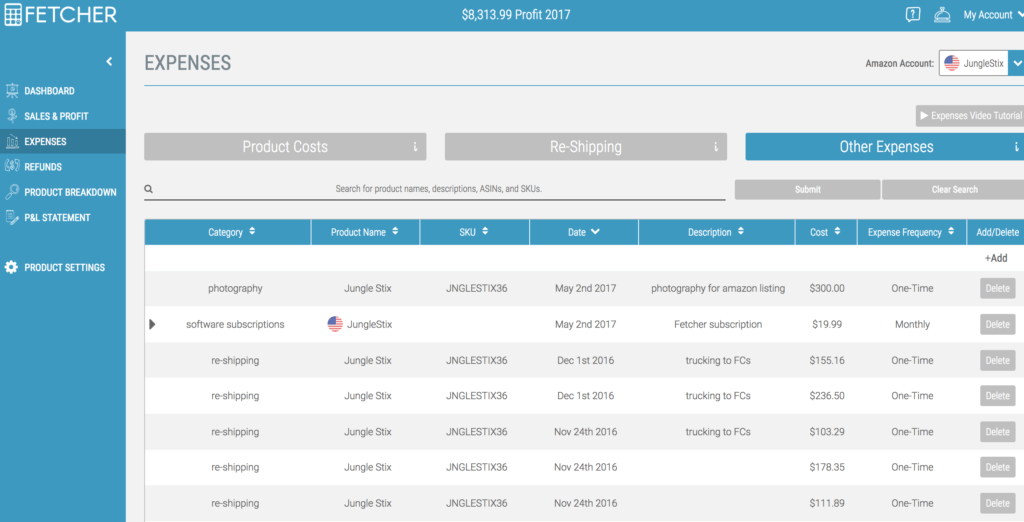
Whether you use software or Excel and Seller Central, it is important to take note of all of the expenses that you incur in order to sell your products. Seller Central doesn’t allow for you to enter these additional expenses like Cost of Goods Sold or software expenses, but make sure to tally them up when you are calculating your total profits!
Which brings us to the third, and most improtant, financial metric:
Profits
The most important metric for any business to assess the financial health is the Profit and Loss statement. Once you have calculated your sales and expenses, you can find your profits.
As Shane notes, your profit and loss statement is the backbone of your business. It allows you to see the trends, strengths and weaknesses of the business.
Here is a look at the Profit and Loss statement for the last 30 days for Jungle Snugs and Jungle Stix:
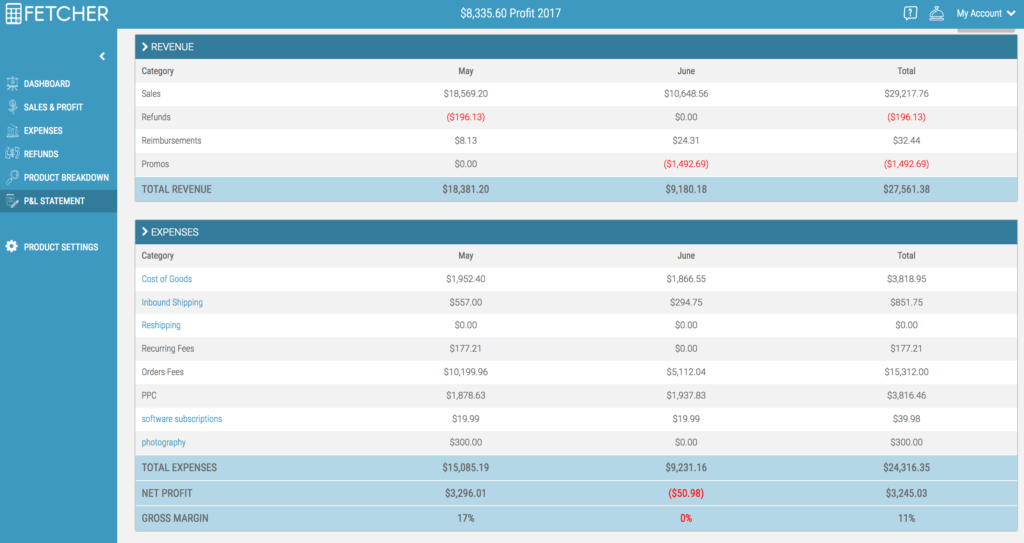
And extending that out to capture the year to date:
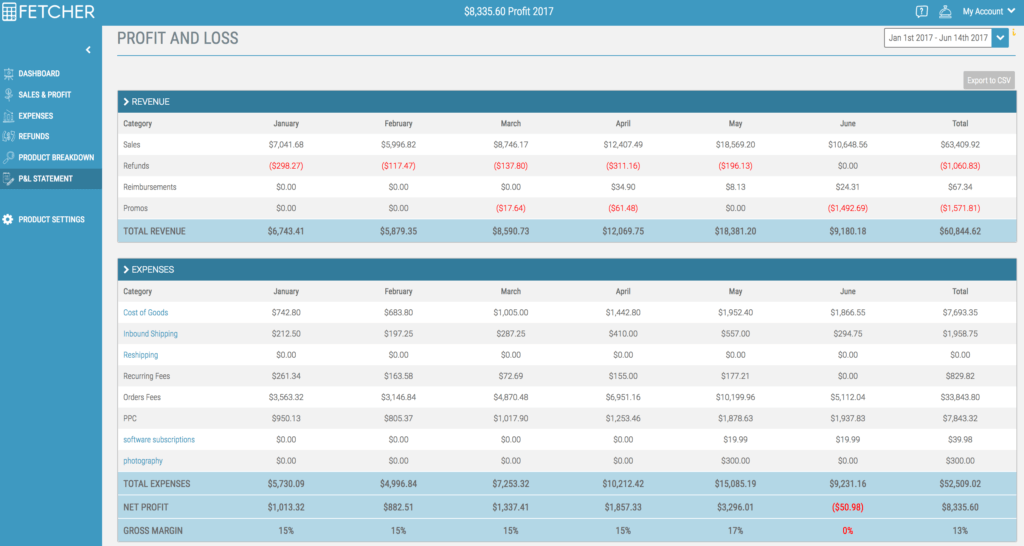
Overall the business is at a 13% profit margin for the year, with $8,335.60 in profit. The profit margins have been negatively impacted by the promotional giveaway and launch strategy of Jungle Snugs.
Is this a bad thing?
No.
It is actually all part of the launch strategy, and the ultimate plan of building a sustainable, long term business. The promotional giveaways, pay per click costs, and upfront costs (like product photography, product samples, etc) were all investments in the long term success of the business.
In Conclusion
Shane did an excellent job in walking us through the considerations and steps to build a financially sound business. These principles extend beyond just Amazon, to any business, whether a software, physical products, service, or any other type of business.
If you want to understand the financial health of your own Amazon business, Shane offered a special offer for those following the Million Dollar Case Study, with 31 days for free and 50% off the following month.
Fetcher is the easiest way to get a hold on your finances, while saving hours of tedious work and getting a better understanding of where tweaks can be made to create impactful improvements on your bottom line.
[x_button shape=”rounded” size=”x-large” float=”none” href=”https://app.fetcher.com/register?coupon=df849aa45d56ca1bfd55df27144fb3db” info=”none” info_place=”top” info_trigger=”hover”]CLAIM YOUR 50% DISCOUNT NOW[/x_button]
Next up… get some productivity and and time management hacks in Session #18 – find the replay here!
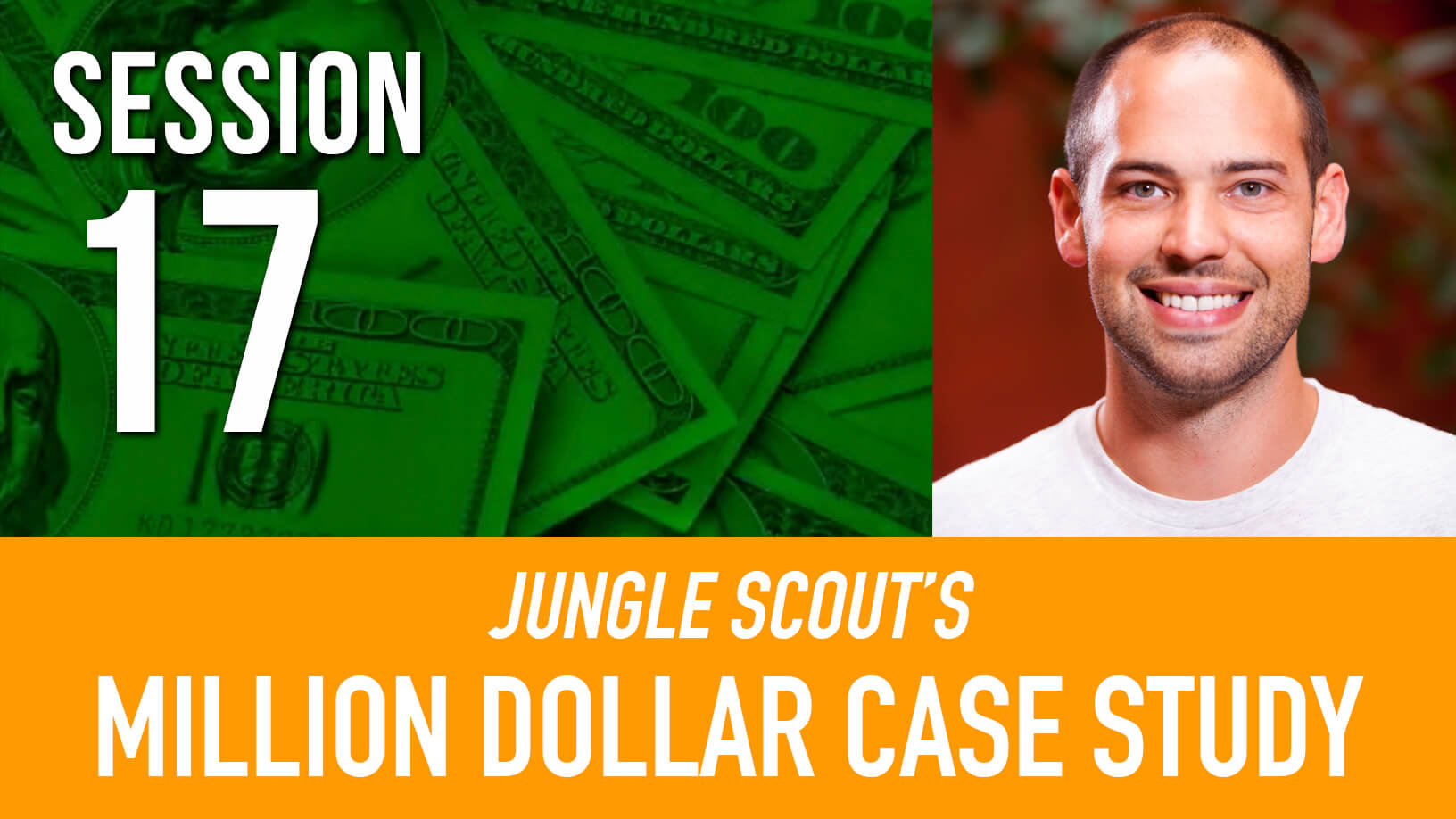
 17 Comments
17 Comments
17 comments on “The Million Dollar Case Study Session #17: Maximizing Profits with Financial Analytics”